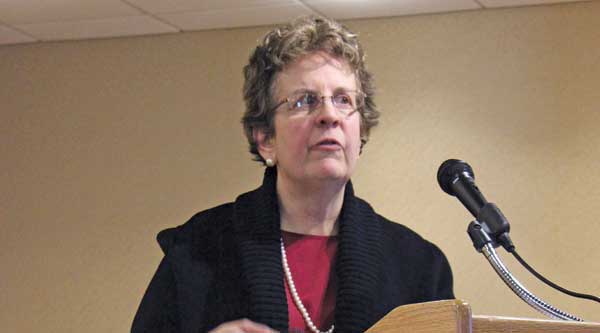JSC doubles down on liberal arts

President Elaine Collins
“Alone we can do so little; together we can do so much,” Helen Keller once said. It is in that spirit that JSC President Elaine Collins is spearheading the effort to gain membership for the college in the Council of Public Liberal Arts Colleges (COPLAC).
Founded in 1988, COPLAC is currently comprised of 29 member institutions in 27 states as well as one in Alberta, Canada. With the exception of Virginia, membership in COPLAC is limited to one institution per state or province.
According to Collins, the essence of COPLAC membership is that they’re all public liberal arts colleges which are committed to providing quality liberal arts education affordable to the public.
The benefits of membership for marketing JSC are significant, Collins said. “It helps us be able to advertise who we are more clearly,” she said, “and to carve out what our mission has been historically and reaffirm that mission, and ensure that people really understand what we do within the higher education real-estate of Vermont.” This is an important feature, given the declining demographic nationwide of the college’s traditional source of student enrollment: high school seniors.
COPLAC members enjoy a number of additional benefits. Externally, the council advocates for public liberal arts institutions at the state and federal levels of government. Internally, it links its member institutions together, allowing for collaboration among the respective faculties.
Collins gave an example of the kind of collaboration that could be expected among member institutions. “There was one [college] in Canada that was offering the Native American experience that was very place-based to Canada and then another one, perhaps in Maine, that was offering the same type of experience. They did a team-taught course and then digitally provided it to students who were part of the consortium. It would increase [student] opportunity to take some very interesting courses across the consortium. For faculty, I think that’s also helpful. I know that I always enjoy the opportunity to work with a colleague and perhaps look at something that I was interested in in a different way because I didn’t have the benefit of their place-based understanding.”
The council also sponsors a web-based, peer-reviewed undergraduate journal entitled Metamorphosis, which, according to the COPLAC website, “showcases out-standing student research and creative activity.”
JSC is well along the path toward joining COPLAC, with four out of the six total steps to gain membership already completed.
Regarding JSC’s progress, Collins is confident that the college will go all the way. “I think we’re well positioned,” she said. “This is not really a change in direction for Johnson. It really affirms what Johnson has been about historically and what Johnson continues to be about. It wasn’t like we were a technical school and now we want to be a liberal arts school. That’s who we are and that’s comfortable for us. What this does is really just sharpen that identity, sharpen that mission.”
JSC could potentially be an official member of COPLAC as early as the 2016–2017 school year, according to Collins. “The last step of the process is another visit that will happen this semester. My hope is that we will be recommended for membership directly after that. It still has to go through board approval, but hopefully by the time that students come back next year, by August or fall, we’ll have it.”
The COPLAC application has strong support among the JSC faculty, according to its assembly chair Associate Professor of Writing and Literature Tyrone Shaw. “It’s a natural fit for us,” said Shaw. “When Elaine approached us with the idea during our summer retreat, she made it clear she would not proceed without our endorsement, which she enthusiastically received. For faculty – and staff, I am sure – this is an affirmation of what we do here, of what we are at our core. It’s also a strong acknowledgment of the practical and humanistic value of a liberal arts education.”


